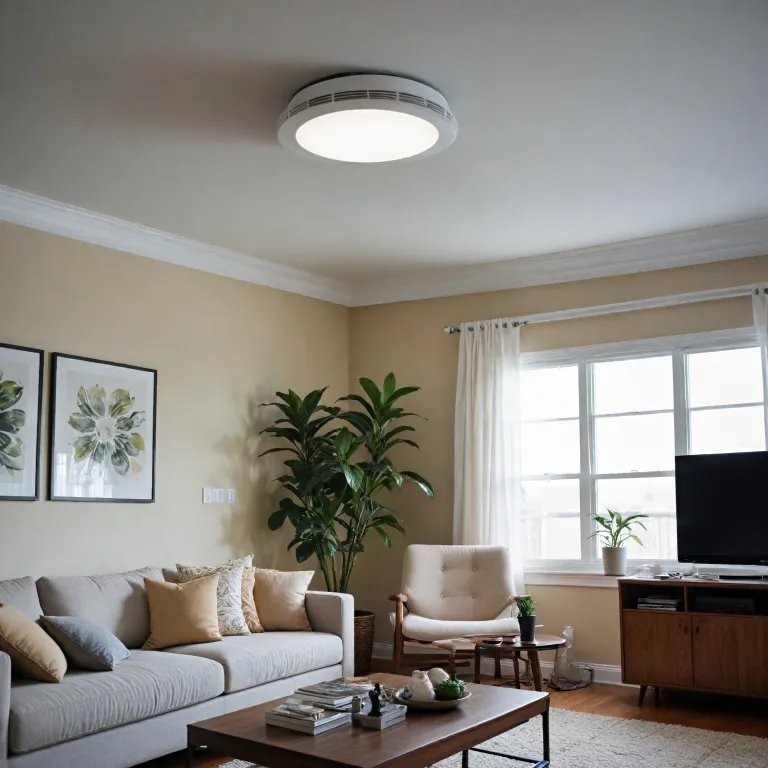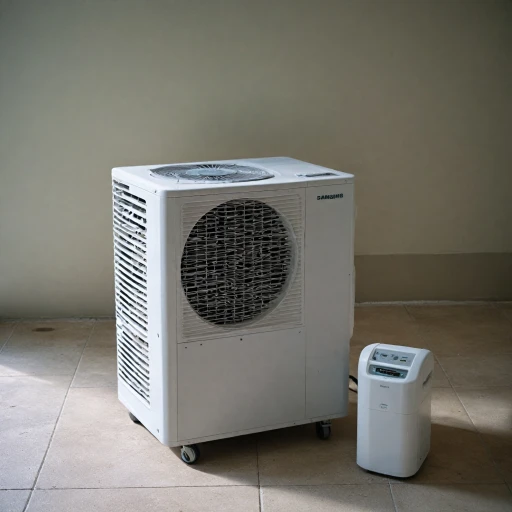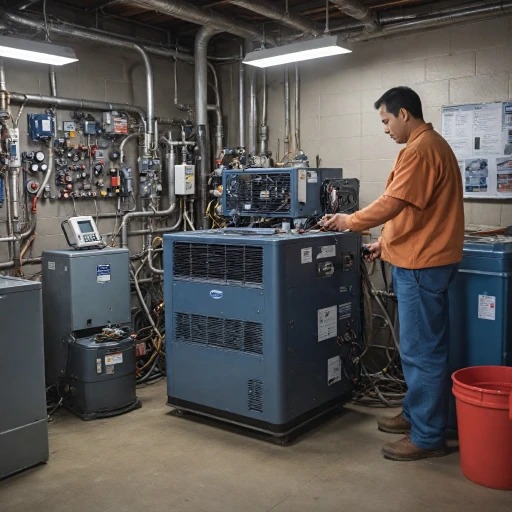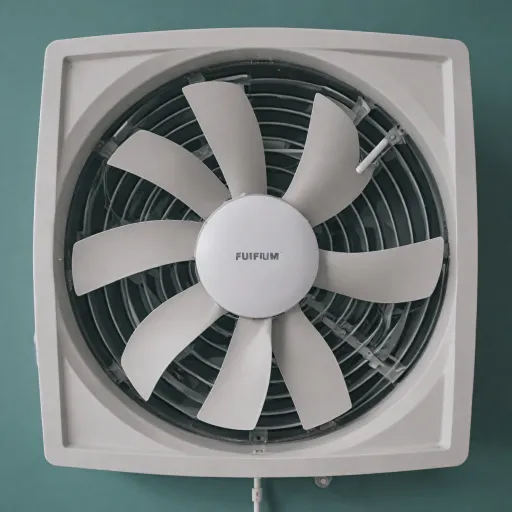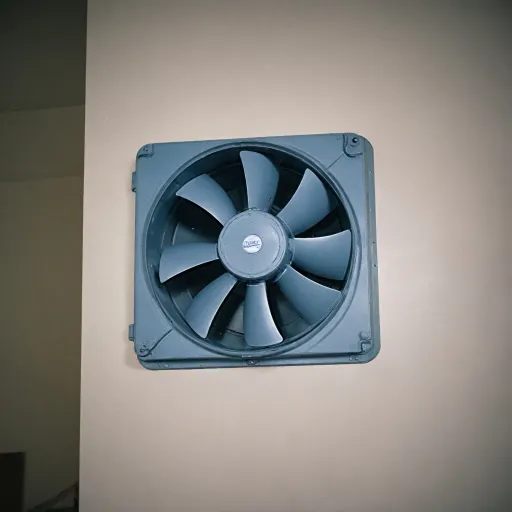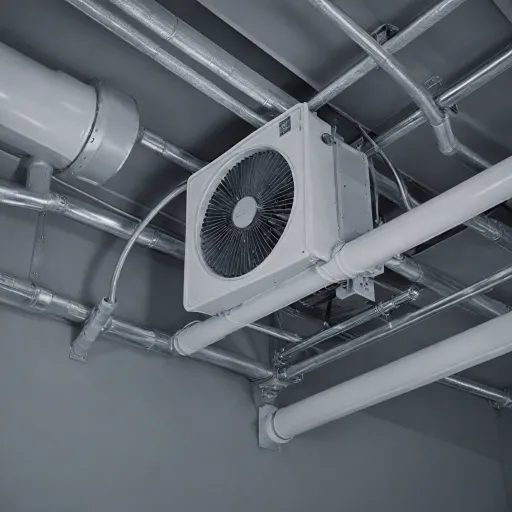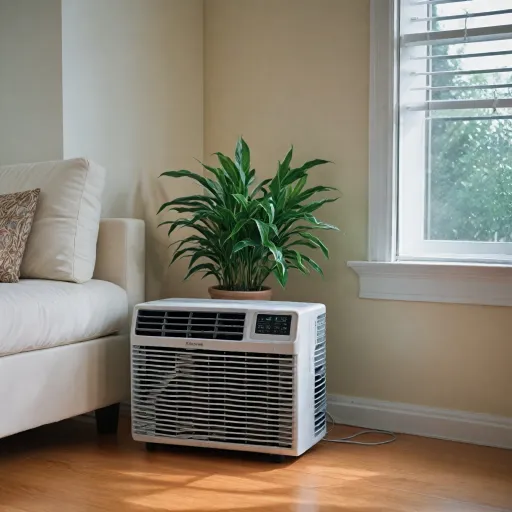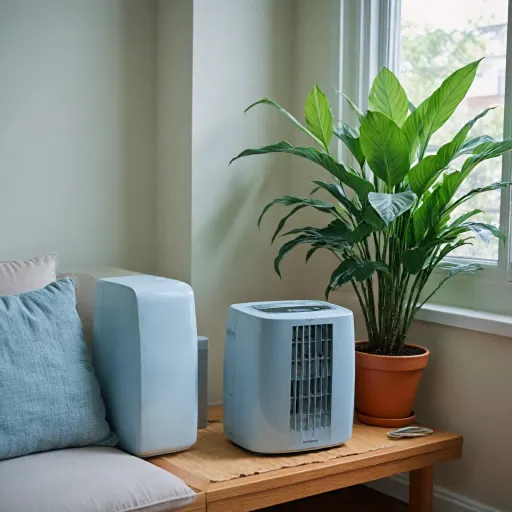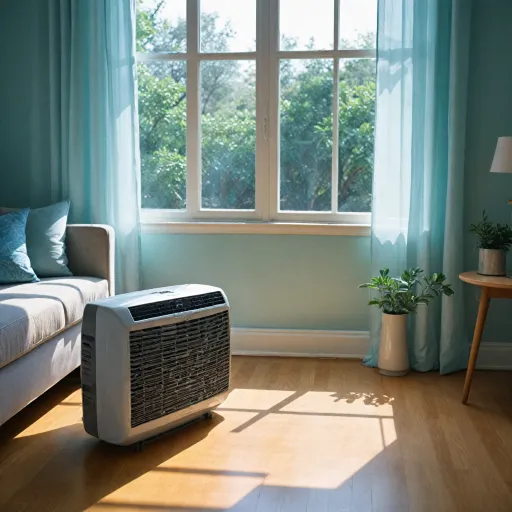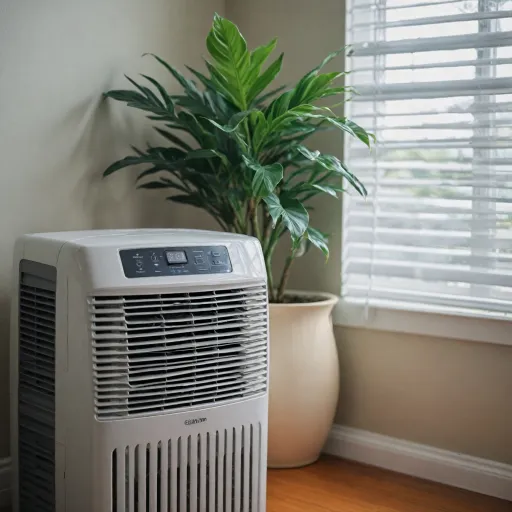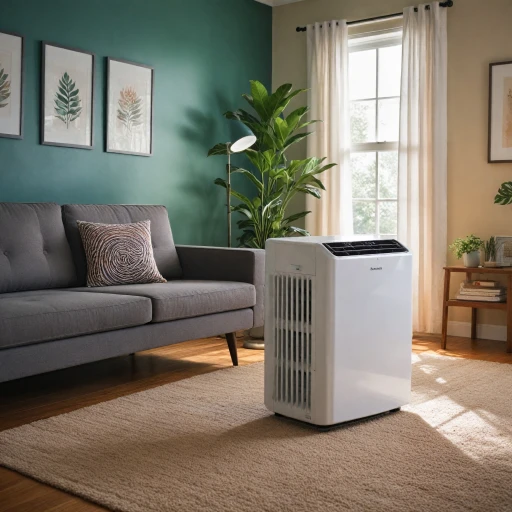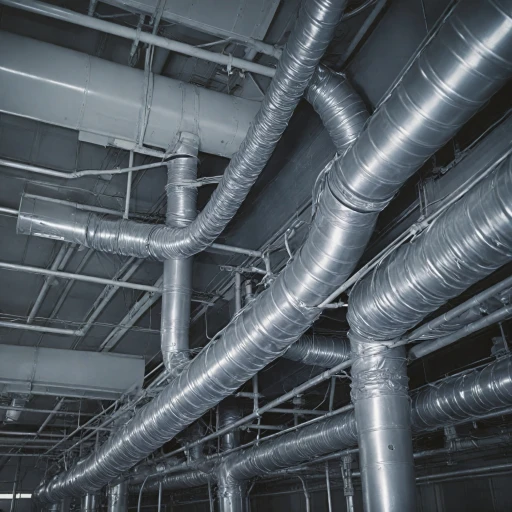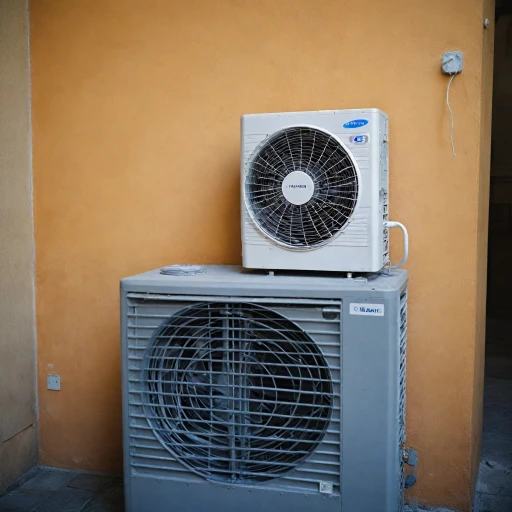
Understanding Vent Booster Fans
Exploring the Basics of Vent Booster Fans
Vent booster fans are an essential component for enhancing the airflow in your home, especially when used in conjunction with portable air conditioners. These fans are designed to improve the ventilation by increasing the flow of air through ducts and registers, ensuring that every corner of your space receives the desired cooling effect.
By addressing the common issue of uneven cooling, vent booster fans help maintain indoor air quality and energy efficiency. They work by drawing air from the main duct runs and pushing it into rooms that are often left under-cooled. This not only fills the gap in air distribution but also enhances the overall efficiency of your cooling system.
Understanding how these fans operate can significantly improve your cooling strategy. They come in various types, such as register boosters and duct boosters, each serving a specific purpose. Register booster fans are installed directly on the vent, while duct booster fans are placed within the ductwork to push air through longer duct runs.
For those looking to optimize their portable air conditioning setup, integrating a vent booster fan can be a game-changer. It’s crucial to consider the power and control options available, as these will impact the fan's performance and your overall comfort.
For more insights on how vent booster fans can enhance your portable air conditioning experience, check out this guide on venting portable air conditioners.
Benefits of Using a Vent Booster Fan with Portable Air Conditioners
Advantages of Integrating Vent Booster Fans with Portable AC Units
Combining vent booster fans with portable air conditioners can bring about several improvements in your indoor air environment. Let's explore some of the key benefits of this integration:- Improved Airflow: A vent booster fan enhances the airflow within your ducts and ventilation systems. This ensures that the conditioned air from your portable AC unit is distributed evenly throughout the room or entire home, addressing uneven temperatures and boosting overall comfort.
- Enhanced Energy Efficiency: By facilitating more efficient air circulation, booster fans reduce the workload on your portable air conditioner. This can lead to more energy efficiency, ultimately lowering your energy bills while maintaining the desired indoor temperature.
- Increased Air Quality: Proper installation and use of booster fans help to maintain air quality by preventing the buildup of particles from lint traps and dryer ducts. By keeping the air moving, it helps fill spaces with fresher air, contributing to a healthier indoor environment.
- Reduced Noise and Improved Control: By ensuring that the load on the portable AC unit is minimized, you can achieve quieter operation. Boosting the airflow reduces the need for the AC to run on high power constantly, promoting a more serene setting.
Installation Tips for Vent Booster Fans
Effective Installation Techniques for Optimal Results
Installing a vent booster fan is a crucial step in ensuring efficient indoor air circulation when using portable air conditioners. Proper installation not only impacts energy efficiency but also enhances air quality and overall comfort. Here are some detailed steps and tips to guide you through the installation process:- Assess Duct Locations: Begin by identifying existing duct runs in your space. It is essential to locate the precise spot where the booster fan will be most effective. Typically, installing the fan near the register or at a critical point in the duct will maximize airflow.
- Choose Correct Fan Type: Depending on your duct system, select an appropriate booster or register fan. For longer duct runs, a duct booster may be more suitable, while a register booster can be effective for shorter ducts.
- Ensure Power Supply: Verify that there is an accessible power outlet near the installation site. If not, you may need to address electrical extension, but ensure this is done per safety standards to prevent overload.
- Prepare the Installation Area: Before installation, clean any dust or obstructions around the installation point. This will prevent obstructions from affecting airflow and avoid the risk of inhaling particles.
- Mounting the Fan: Follow the manufacturer's instructions for mounting the fan. Ensure the fan is securely attached to prevent vibrations and noise. Proper mounting will also aid in efficiency and control of airflow.
- Testing: Once installed, test the fan to ensure it is operating correctly. Check for any unusual noises or vibrations that might indicate a problem. Good practice includes monitoring airflow changes and ensuring the booster's effect is noticeable.
Choosing the Right Vent Booster Fan
Selecting the Ideal Ventilation Booster
When you're ready to enhance your cooling setup with a booster fan, selecting the right model is crucial. The choice will largely depend on a combination of factors that directly impact indoor air quality and energy efficiency. Here are some guidelines to streamline your decision-making process:- Assess Air Duct Sizes and Lengths: Consider the size and length of your existing duct runs. Make sure the booster fan is compatible with the dimensions to ensure proper installation and efficient airflow. Oversized or undersized fans can lead to inefficiencies or even damage.
- Evaluate Power Requirements: Different booster fans demand varying power levels. Ensure your electrical setup can accommodate the energy needs of the fan you select. It’s essential for both safety and performance.
- Check Noise Levels: While all booster fans produce some noise, their sound output can vary significantly. For maintaining serenity in living spaces, prioritize models with lower noise levels when they're operational.
- Consider Energy Efficiency: Certain models offer better energy efficiency, contributing to reduced utility bills. Opt for a booster fan that provides high performance with minimal energy consumption.
- Explore Control Options: Some booster fans come with advanced control features, such as programmable settings or remote control. These options can provide additional convenience and flexibility in regulation.
- Match with Existing Register Size: Ensure the fan fits snugly within or over the register. Proper fitting is essential for effective air propulsion and to eliminate airflow obstructions.
Common Challenges and Solutions
Addressing Common Issues with Vent Booster Fans
While vent booster fans can significantly improve the airflow and energy efficiency of your portable air conditioner, there are some common challenges you might encounter. Understanding these issues and knowing how to address them can help maintain optimal performance.
Power and Efficiency Concerns
One of the primary concerns with booster fans is ensuring they have enough power to effectively enhance airflow through your duct runs. If the fan is not powerful enough, it may not provide the desired boost to your ventilation system. To address this, ensure you select a fan with the appropriate power rating for your specific needs. Additionally, regularly check the fan's efficiency to ensure it is operating at its best.
Installation and Duct Compatibility
Improper installation can lead to reduced performance and potential damage to the fan or ducts. Ensure that the booster fan is compatible with your existing duct system and is installed correctly. This includes checking that the fan fits snugly within the duct or register and that there are no gaps that could reduce efficiency.
Air Quality and Lint Trap Maintenance
Maintaining indoor air quality is crucial, and a clogged lint trap can hinder airflow and reduce the effectiveness of your booster fan. Regularly clean the lint trap and any other filters associated with your ventilation system to ensure proper airflow and maintain air quality.
Noise and Control Issues
Some users may find that booster fans generate more noise than expected. To address this, consider fans designed for quieter operation or install sound-dampening materials around the fan. Additionally, ensure that the fan's control settings are properly configured to balance airflow needs with noise levels.
Regular Maintenance for Longevity
Like any appliance, regular maintenance is key to extending the life of your booster fan. This includes cleaning the fan blades, checking for any obstructions in the ducts, and ensuring all connections are secure. By following these maintenance tips, you can help ensure your booster fan continues to enhance your portable air conditioner's performance effectively.
Maintenance and Care for Optimal Performance
Extending the Lifespan and Efficiency
Proper maintenance of your vent booster fan is essential for ensuring optimal airflow and extending the lifespan of your system. Regular updates to your booster fan setup can help maintain air quality and energy efficiency. Moreover, keeping an eye on associated duct systems will prevent unexpected disruptions, thereby sustaining proper operation of your fans.
Routine Inspection and Cleaning
To maintain your duct booster or register booster, regular inspection is crucial. Checking the ventilation path can alert you to any clogging concerns, often caused by dust or other debris. Implementing a consistent cleaning schedule will help prevent such blockages. Lint trap areas, especially in dryer setups, should not be ignored as they can significantly impact your indoor air quality.
Essential Updates on Components
Considering the wear and tear of mechanical parts, replacing or upgrading components of your booster fans is essential. Be it the power supply module or other parts that control the fan speeds, ensure they operate without hiccups. Keeping the necessary tools to address minor repairs handy will go a long way in ensuring minimal downtime of the vent booster system.
Ensuring Control and Efficiency
For efficiency, it's crucial to have a proper series of checks, ensuring the duct runs are free from obstructions. This series of checks ensures that the register allows efficient air passage without overburdening the fan, thus making sure you're not compromising on energy efficiency.
Addressing Common Challenges
Proper maintenance includes not only preventing but also addressing common challenges. For instance, how to respond when your vent booster fan loses efficiency or creates noise due to loose components. Ensuring that all parts are tightly secured can curb most noise issues. In case issues prevail, consulting a professional technician might be required.
Therefore, dedicating time to maintaining your booster system is not only crucial for air quality but also for optimizing your comfort at home.
